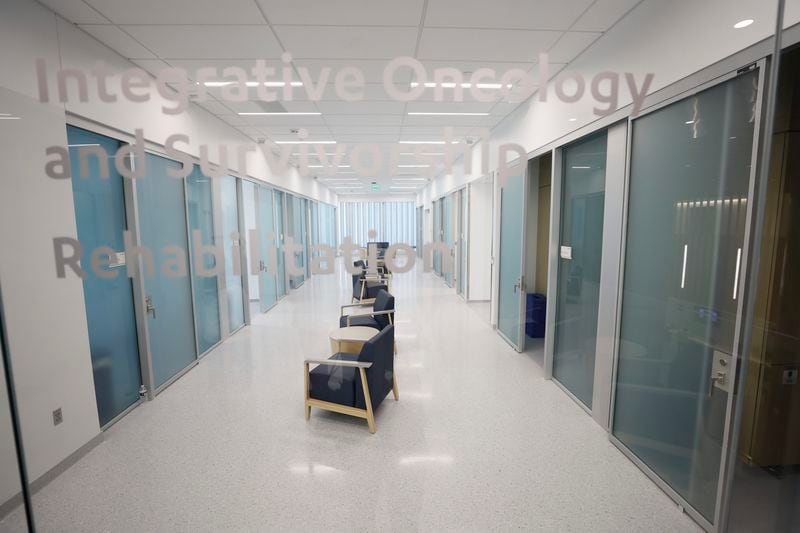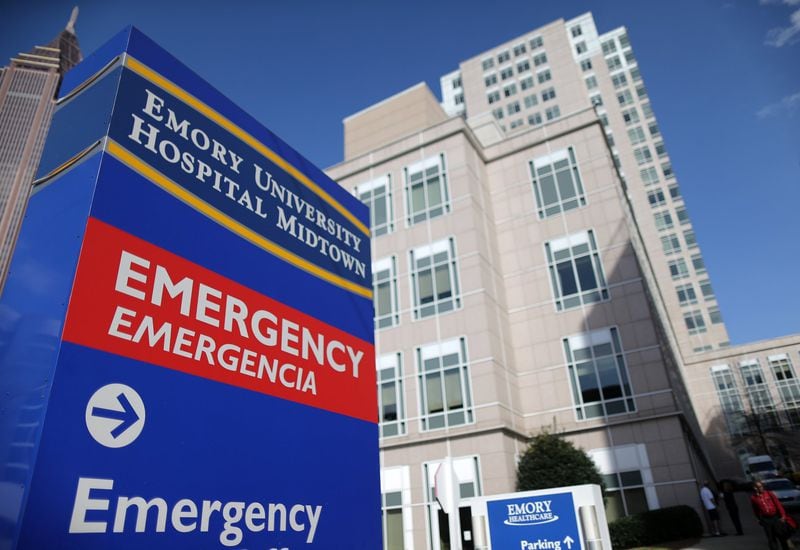As Emory Healthcare’s financial picture brightens after immense financial strain during the COVID-19 pandemic, the healthcare system is committing to $100 million in employee raises, The Atlanta Journal-Constitution has learned.
Dr. Joon Lee, chief executive officer for Emory Healthcare, told the AJC earlier this week that the hospital system started allocating money for pay increases in March.
Lee anticipates about 17,000 of Emory Healthcare’s 25,000 employees working at 11 hospitals and about 250 outpatient clinics located mostly around metro Atlanta will receive a raise from the fund. Lee said those receiving the raises include employees who “touch a patient in some manner.” This includes nurses, respiratory therapists, nutrition services employees and environmental services employees, who clean and disinfect hospital rooms and other common areas in hospitals.
He said the raises are part of an investment in Emory’s workers and should also help decrease the hospital system’s reliance on temporary nurses and other temporary workers, who can be very costly to hospitals.
The raises are possible because after operating at a loss through the pandemic, Lee said the nonprofit hospital’s financial performance is back in the black for the first three quarters of the 2024 fiscal year, which ends Sept. 30.
With what he called a concerted effort from new leadership at Emory Healthcare, Lee said the hospital system is aiming to reach a 9% to 10% positive margin. That will “sustain a three-part mission of high-quality care for a broad segment of population, support for innovation and training the next generation of health care providers.”
The hospital, he said, is “making great progress much faster than we expected toward achieving that goal.”
Credit: Miguel Martinez
Credit: Miguel Martinez
The coming raises for workers will be phased in over a six-month period. The size of the raise for each employee will vary, but Lee said for some nurses it will amount to a $10,000 annual salary increase.
“We are making an investment,” he said. “That’s not all of it, but it’s part of this turnaround we are investing in. We are betting on ourselves.”
Among those not receiving a pay bump from the $100 million allocation include physicians, physician assistants and nurse practitioners, who tend to be among the highest paid employees and are in a separate category, Lee said.
Credit: TNS
Credit: TNS
Lee, who arrived as CEO of Emory Healthcare about a year ago, took over at a time of recovery for Emory Healthcare after the worst of the pandemic had thrown hospital systems throughout the U.S into a crisis — both medical and financial. The pandemic also ramped up feelings of burnout and anguish for hospital employees. Many left the medical field.
But the financial problems that struck hospitals during the pandemic, including Emory, had actually been growing for a long time, Lee pointed out. The pandemic just highlighted them.
Although some hospitals and health systems are showing signs of improvement in the months since the pandemic has lifted, many continue to face extraordinary financial pressures and are even on the brink of financial disaster. In a recent analysis by Kaufman Hall, the consulting group reported about 40% of hospitals are still losing money this year.
Another recently released report from the health analytics and consulting firm Chartis paints a picture of the grim reality, especially for rural hospitals. The firm concluded that half of rural hospitals in the U.S. lost money in the past year, up from 43% the previous year. It also identified 418 rural hospitals across the country it estimates are “vulnerable to closure.”
And according to Chartis, hospitals in Georgia and other states that have not expanded Medicaid are faring even worse with the percentage of facilities with a negative operating margin rising to 55%, up from 51% during the previous year.
Lee took note of the differing fortunes of different kinds of hospitals, and Emory’s place in the middle of the spectrum. In one group are large for-profit hospital systems such as Hospital Corporation of America or HCA, with profit margins that can exceed 10%.
“Unfortunately, at the other end of the spectrum are rural hospitals and they are really struggling; especially small rural hospitals,” he said. “And in between are the nonprofit health systems and academic non-profit health systems, and we work in that bucket.”
Challenges remain for Emory Healthcare. Some come in the form of an unwelcome surprise, such as the city’s recent major water outage, which forced Emory University Midtown Hospital to move some patients and rely on bottled water for more than 24 hours.
Others are ongoing, including Emory’s continuing reliance on temporary workers, especially nurses. Lee said Emory Healthcare continues to use those workers as necessary, but the number is down sharply — as much as a 50% drop from a peak period during the earlier years of the pandemic. He said about 17% of Emory Healthcare’s nursing staff is currently temporary employees, and they are working to bring that number down.
“It’s never going to be zero but we want it much lower than where it is currently,” he said.
Temp workers, called “travel nurses,” are often paid more than regular staff nurses. The salary range for Emory Healthcare nurses ranges on average between $38 to $47 per hour, according to Glassdoor. That is in line with the national average, according to Indeed.
In addition to the planned raises, Lee said Emory is looking at other ways to improve job satisfaction among employees, including new technologies that can ease the burden of paperwork.
“I have been incredibly focused on recruitment of talent for the organization,” said Lee. We want to not only be a regional player but of national prominence and international prominence. We think Emory Healthcare and Emory is a resource for the region, something to be proud of and we can only do that if we deliver excellent care and where people look to us and say, ‘that’s where innovation occurred. That’s where the best care occurred.’”
Editor’s note: This story has been updated to reflect Emory is not the state’s largest healthcare system; and that Emory has a goal to reach a 9% to 10% positive margin, but it may not be achieved before the end of the 2024 fiscal year.











